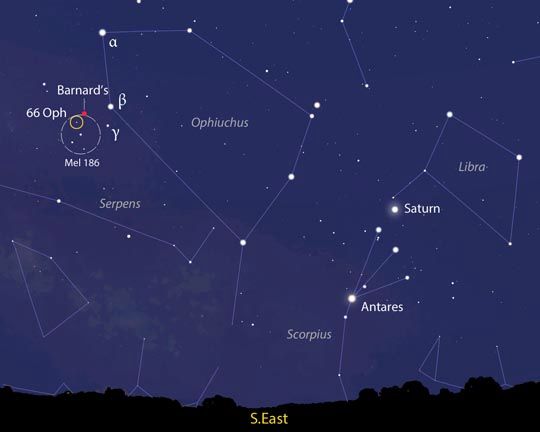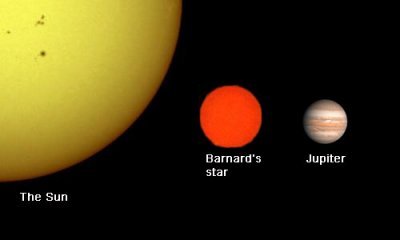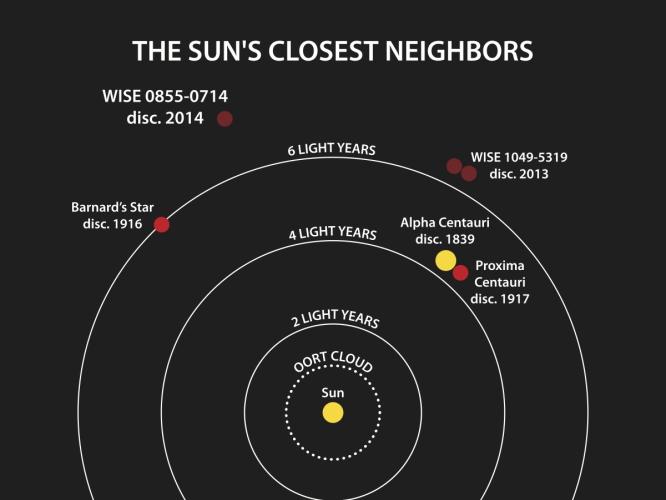The Universe is Way Bigger Than You Think part10 - Barnard’s star
Barnard’s star, third nearest star to the Sun, at a distance of about 6 light-years. It is named for Edward Emerson Barnard, the American astronomer who discovered it in 1916. . It is a red dwarf star

Because of its high velocity of approach, 108 km (67 miles) per second, Barnard’s star is gradually coming nearer the solar system and by the year 11,800 will reach its closest point in distance—3.85 light-years
A very cool and dim, Barnard's Star has less than 17 percent of Sol's mass, 15 to 20 percent of its diameter , around 4/10,000th of its visual luminosity -- 0.00346 of its bolometric luminosity , and between 10 and 32 percent of its abundance of elements heavier than hydrogen.

According to calculations by Dr. Sten Odenwald, substituting Barnard's Star for Sol would give the Earth such a dim and very red Sun that it would only be 100 times brighter than the Full Moon, and so the planet would freeze solid at the surface.
In order to be warmed sufficiently have liquid water at the surface, an Earth-type rocky planet would have to be located very close to such a cool and dim red dwarf star like Barnard's, at around 0.034 to 0.082 AU. At such close distances, such a planet can easily become tidally locked -- with one side in perpetual day -- and race around the star in 5.75 to 21.5 days or three weeks. No planet was ever verified but that does not mean there isnt one

With the fastest space craft we have at this moment traveling to Bernard star would take over 30000 thousands years
Congratulation lasper! Your post has appeared on the hot page after 5min with 6 votes.
This post has received a 9.99 % upvote from @boomerang.
Edward Emerson Barnard
source wiki